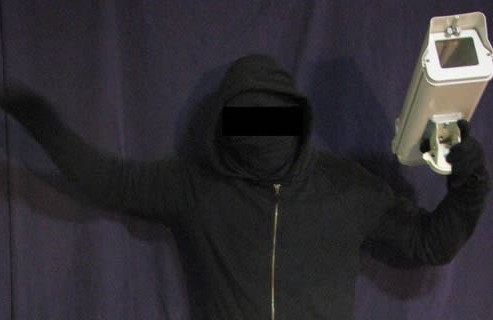
Anonymous submission to MTL Counter-info
We’re just a few veterans of past Camovers who decided to take a break from scheming this month’s outings to share some tips with other crews. We prefer to win by tallying more points than y’all over a full month’s efforts and not because a bunch of you got busted.
First, let’s consider the current state of consumer camera technology, which has advanced in the past decade since the advent of the Camover tradition. This information is easily gathered by browsing product listings on Amazon. It is safe to assume that the security cameras we come across on homes and businesses, including doorbell cams, have certain capabilities:
- High-definition video recording including night vision with a fairly wide viewing angle;
- Microphones for recording audio;
- Video analysis including detection of individuals approaching the camera or tampering with it;
- Alerts of suspicious activity that may be sent in real-time to an app on the owner’s phone or to a monitoring center;
- Battery power and data transmission over WiFi, meaning a camera may continue to capture audio/video after being detached from a wall.
These capabilities make it even more important to bloc up, to act quickly and quietly, and to use lookouts. Let’s expand on each of these.
Masking up: This one goes without saying. Sunglasses for anyone going remotely near a cam, and good winter bloc for everyone as the nights get colder.
Stealth: If playing with a buddy, avoid speaking to each other anywhere a camera could pick up audio. Develop hand signals if needed. Near homes, noise level is also critical for not alerting residents. For a light sleeper on their couch a few feet inside, the sound of you fumbling outside their door may sound a lot like a break-in attempt. They could call the cops without you knowing, and response times for home robberies are fast. Prying the device off with a crowbar may be quieter than smashing it with a hammer. Make a plan beforehand so that you can act and get out quickly, being out of sight before any response to an automated alert. Take an erratic, unpredictable route when running up your score in the same general area.
Lookouts: Having one or more comrades in lookout roles isn’t optional. If cops are called, lookouts must be able to spot them and alert those in an action role before the cops arrive at the action location. The number and placement of lookouts should be decided based on the geography and activity level of the action area. A long block of a one-way residential street may only require one lookout (be aware that cops can drive the wrong way down a one-way though). On shorter blocks of a commercial, well-lit, busier street, you may want two, three, or more lookouts. Always consider the likeliest direction(s) for cops to arrive (including the most direct route from the station whose territory you’re on). Intersections are often good places for lookouts since they allow for visibility in multiple directions. Lookouts also watch for civilian vehicles, taxis, cyclists and pedestrians, so that you can act without witnesses. Consider deciding on three signals: one for an approaching civilian, another for police that are simply patrolling, and a third for police that appear to be responding to a call or are headed toward the action location. Signals can be given by shouting something innocuous, like a random name, or using walkie-talkies. How you’ll respond to each signal, from pausing and chilling to sprinting out of sight, will depend a lot on circumstances; talk through different scenarios beforehand with your team. Keep in mind that cops can work in plainclothes and unmarked cars when they’re on heightened alert in a certain area.
Some other fun multipliers:
- While we love camover video mashups as much as the next anarchist, consider not filming your actions until you’re very comfortable with the different tactics and your team dynamics. Filming adds another thing to think about and creates evidence that could be unhelpful in case of arrest.
- Think about how to lower the risk of home and business owners installing new cameras after you destroy their current ones. They may be more prone to doing so if they see it as an attack targeted at them or their property, so consider ways of communicating that it’s part of a general campaign against surveillance in the neighborhood, like leaving flyers or posters in the area.
- Learn to spot fake surveillance cameras. These may have a fake wire that doesn’t lead to any power source, or no wire and no space for batteries. Leave these alone, or tear them down because they still contribute to a climate of widespread surveillance–but beware the shook business owner who’ll replace them with real ones.
In the end, your efforts are only as strong as your weakest link, so make sure your whole team is prepared to act with caution, discretion, and finesse. With the right balance of secrecy, speed, and skill, your team can outpace even the most sophisticated surveillance systems and continue to disrupt the pervasive culture of surveillance wherever you go.


